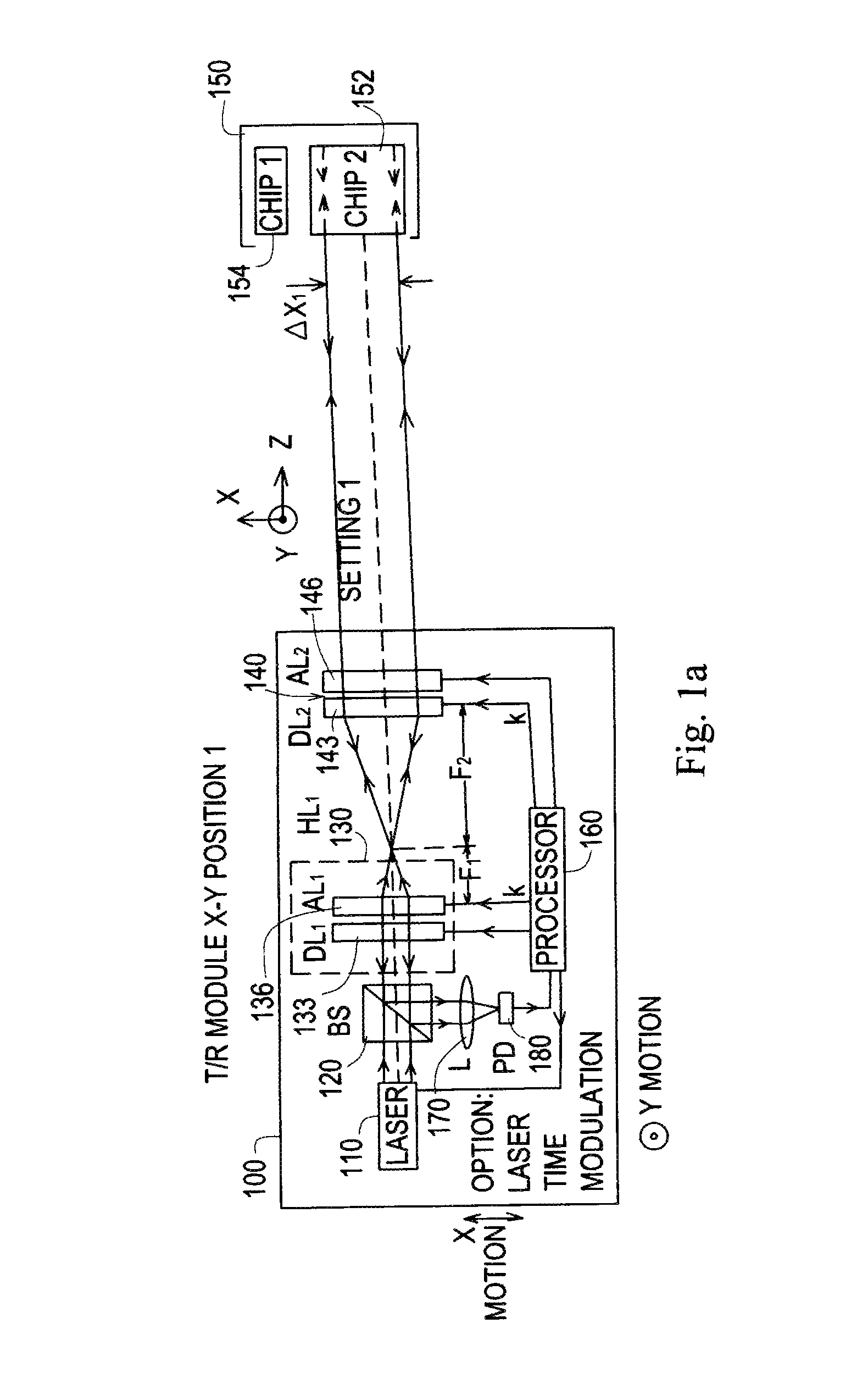Spatially smart optical sensing and scanning
a scanning and optical sensing technology, applied in the field of optical sensors, can solve the problems of poor spatial resolution of images and much effort spent on extracting target axial direction data, and achieve the effect of spatial intelligen
- Summary
- Abstract
- Description
- Claims
- Application Information
AI Technical Summary
Benefits of technology
Problems solved by technology
Method used
Image
Examples
first embodiment
[0079]In summary, a first embodiment provides a smart spatial optical sampling / sensing device that includes a laser source for producing an input laser beam, a variable focal length telescopic targeting system to project the input laser beam toward a target subjected to a measurement, a detection device for detecting the return beam from the target and generating a signal in response, and a processing device to control the laser source and variable focal length telescopic targeting system and receive the signal from the detection device, wherein the optical distance sensor adjusts the transverse beam spot size at each axial position based on the specific target's 3-D shape profile for an optimized smaller sampling data set is generated for a given target.
[0080]The variable focal length optical device includes a beam splitter, and a first variable hybrid lens to produces a F1 effective focal length cascaded with a second variable hybrid lens to produces a F1 effective focal length se...
third embodiment
[0083]A third embodiment provides a laser scanning display system that includes a controllable laser source to produce a laser beam, a wavelength beam forming optics for receiving the laser beam and producing a scanning beam, a programmable hybrid lens to focus the scanning beam, an adjustable scanning mirror for reflecting the focused scanning beam toward the display screen, a processing device having a memory to control the laser source, to control the wavelength beam forming optics, to focus the scanning beam spot in the display screen, to adjust a position of the adjustable scanning mirror to scan the display screen and to record the programmable hybrid lens focal length and mirror scan angles in the memory to generate plural pixels on the display screen, and a display screen to display an image produced by scanning the display screen with the reflected focused scanning beam. The controllable laser source can be a first, second and third laser source each producing a different c...
PUM
 Login to View More
Login to View More Abstract
Description
Claims
Application Information
 Login to View More
Login to View More - R&D
- Intellectual Property
- Life Sciences
- Materials
- Tech Scout
- Unparalleled Data Quality
- Higher Quality Content
- 60% Fewer Hallucinations
Browse by: Latest US Patents, China's latest patents, Technical Efficacy Thesaurus, Application Domain, Technology Topic, Popular Technical Reports.
© 2025 PatSnap. All rights reserved.Legal|Privacy policy|Modern Slavery Act Transparency Statement|Sitemap|About US| Contact US: help@patsnap.com



